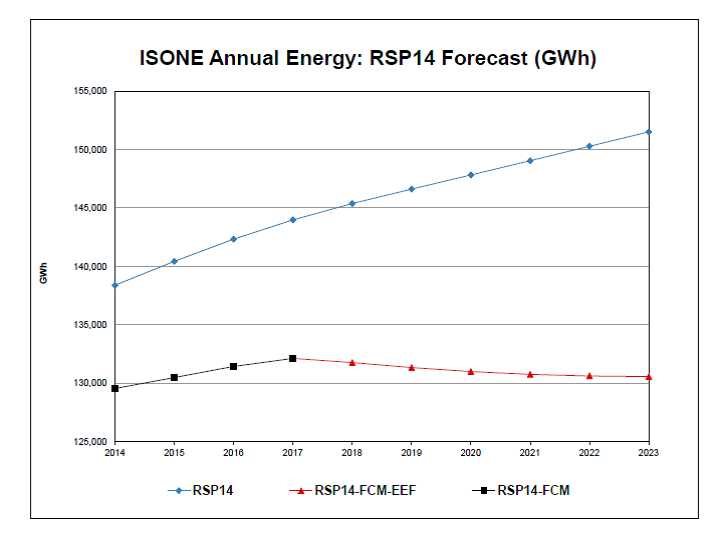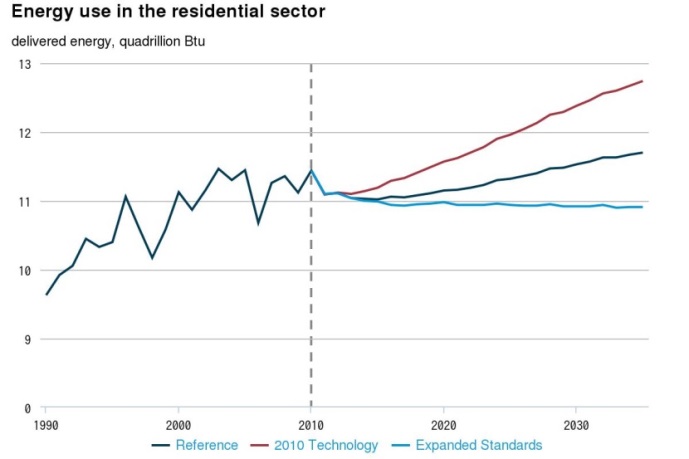By Josh Craft | Mon, May 5, 14
Energy efficiency policy work doesn’t always make for great conversation at dinner parties. Energy efficiency represents energy and money not wasted, so it’s less tangible than new solar panels or a natural gas well. And much of NEEP’s work is behind the scenes, spread across the Northeast and Mid-Atlantic states in regulatory proceedings that can be hard to follow, on topics that may not, on the surface, sound very interesting. The energy efficiency policies we follow certainly haven’t captured media attention the way that the future of the Keystone XL pipeline has. But an article in last week’s New York Times by Coral Davenport helps show just how important these proceedings on energy efficiency (and other aspects of energy and environmental policy) are to the future of our energy landscape and the Earth’s climate.
Davenport contrasts the significance of these rules on carbon emissions, including the upcoming federal regulations on existing power plants and federal appliance standards, with the expected emissions from Keystone XL:
“Experts say that Mr. Obama’s eventual decision on the [Keystone XL] pipeline will have a marginal impact on global warming emissions, while those dull-sounding E.P.A. rules and treaty talks will determine his environmental legacy.
Consider the numbers: In 2011, the most recent year for which comprehensive international data is available, the global economy emitted 32.6 billion metric tons of carbon pollution. The United States was responsible for 5.5 billion tons of that (coming in second to China, which emitted 8.7 billion tons). Within the United States, electric power plants produced 2.8 billion tons of those greenhouse gases, while vehicle tailpipe emissions from burning gasoline produced 1.9 billion tons.
By comparison, the oil that would move through the Keystone pipeline would add 18.7 million more metric tons of carbon to the atmosphere annually than would be produced by conventional oil, the E.P.A. estimated. In other words, those added carbon emissions would amount to less than 1 percent of United States greenhouse gas emissions, and an infinitesimal slice of the global total.”
It’s worth taking a quick look at the potential impact of a few of the “small” energy efficiency rules and regulations we are engaged with here on our energy use:
- ISO-New England recently released their latest 2014 energy efficiency forecast, which estimates the impact of energy efficiency investments on regional electricity use. ISO-New England continues to find that because of these EE investments, some of the highest in the nation, energy use in New England will remain flat through 2023 and help shave peak demand. The red line in the chart below shows energy use declining between over the next decade:

 Massachusetts continues to be the region’s leader in energy efficiency (though a number of states are right on its heels). The investments that the Bay State has made in energy efficiency under the Green Communities Act have been hotly contested. But a new report by the Analysis Group finds not only have the state’s energy efficiency and clean energy programs resulted in significant energy savings, but that they have helped grow the economy. In total, the report estimates that the Green Communities Act programs will result in 3.6 Terawatt-hours (TWH) in reduced energy consumption and a reduction of 614 megawatts (MW) in peak demand by 2025, while adding $1.2 billion in value to the economy and supporting 16,000 jobs.
Massachusetts continues to be the region’s leader in energy efficiency (though a number of states are right on its heels). The investments that the Bay State has made in energy efficiency under the Green Communities Act have been hotly contested. But a new report by the Analysis Group finds not only have the state’s energy efficiency and clean energy programs resulted in significant energy savings, but that they have helped grow the economy. In total, the report estimates that the Green Communities Act programs will result in 3.6 Terawatt-hours (TWH) in reduced energy consumption and a reduction of 614 megawatts (MW) in peak demand by 2025, while adding $1.2 billion in value to the economy and supporting 16,000 jobs.
- Finally, federal appliance standards have been an essential strategy to reduce national energy use and one that states in our region have been strongly engaged. The charts below from the U.S. Energy Information Agency (EIA) show that the standards enacted in recent years (as well as state building codes for new construction) have helped to keep energy use flat even as our economy has grown. Pursuing even more appliance standards would allow us to continue to reduce residential energy consumption across fuels in the future.


